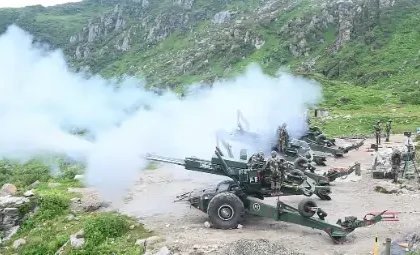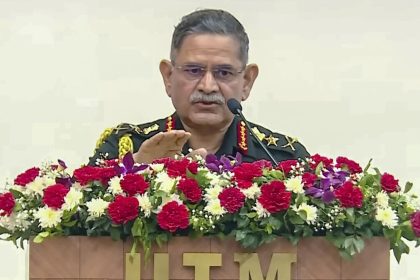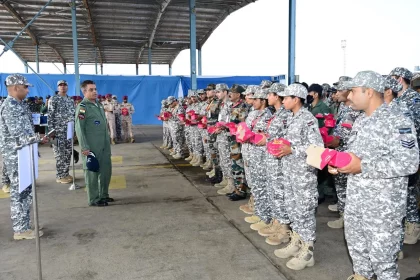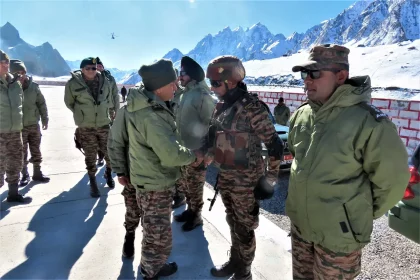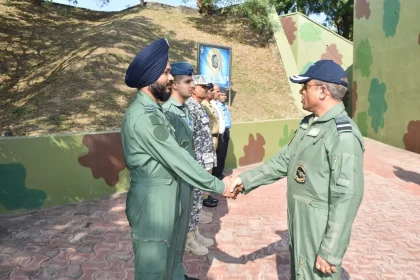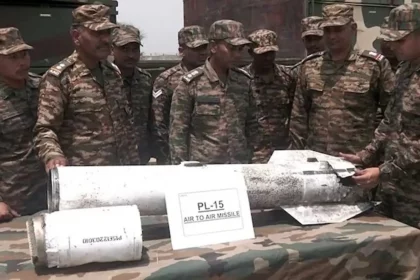Exercise AgniDrishti Demonstrates Cutting-Edge Multi-Domain Warfare Capabilities in Southern Desert
Lt Gen Arvind Chauhan Commends Sensor Fusion, Fire-Control Integration, and Operational Excellence.
‘Operation Sindoor 2.0 Could Happen Anytime’: Army Chief General Upendra Dwivedi Calls Women Soldiers Embodiments of Mother Kali
Highlights Leadership, Nation-Building, and Veteran Welfare During Visit to Pithoragarh.
Air Marshal Nagesh Kapoor Reviews Operational Readiness at Air Force Station Jamnagar, Extends Diwali Greetings to Personnel
Emphasises Training, Technology, and Teamwork as Pillars of Operational Excellence.
General Upendra Dwivedi Reviews Operational Preparedness in Kumaon Region, Celebrates Diwali with Troops
Commends Innovative Green Initiatives and High Standards of Professionalism at Panchshul Brigade.
Air Marshal Nagesh Kapoor Celebrates Diwali with Air Warriors at Air Force Station Samana
Commends Personnel for Exemplary Role in Operation Sindoor, Urges Continued Vigilance.
DRDO to Integrate Advanced Tech from Chinese PL-15 Missile into Astra Mk-II After Recovery During Operation Sindoor
Recovered Missile Offers Rare Insight into China-Pakistan Air Warfare Capabilities.

